
HEADER IMAGE: James Joiner
Welcome to The Dispatch, Protect Our Winters’ weekly review of climate news, complete with our take on each topic and how that fits into our ongoing efforts to reduce the effects of climate change.
Have you heard about the new F-150 Lightning?! Wait till you check out the frunk. We cover the big electric vehicle announcement, its impact on electric vehicle adoption and more in this week’s POW Dispatch. Two POW board members make appearances in the Dispatch this week. We highlight an article penned by Auden Schendler, chair of the POW board of directors, outlining the inseparable connection between climate change and social equity. We also touch on a new report from POW emeritus board member, Naomi Oreskes, and fellow science historian, Geoffrey Supran, explaining how communications efforts from the fossil fuel industry have laid the blame for climate change at the feet of consumers, leading to paralysis on climate action. And, to round out this week’s news recap, we examine the milestones we need to hit in order to achieve carbon neutrality by 2050. Catch up on this week’s climate news in the POW Dispatch.
The Climate-Equity Connection
Harvard Business Review
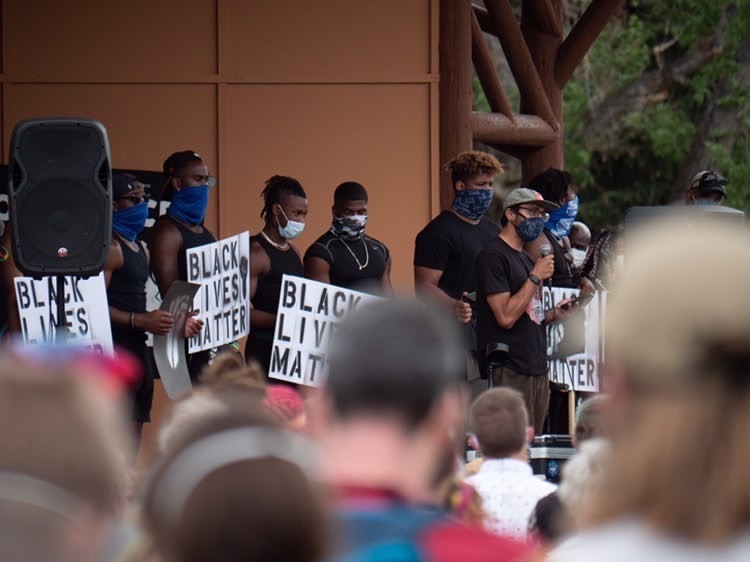
Notable Quote:
“In a sense, the social justice revolution now happening in American streets is the climate revolution, because the goals are effectively the same; the candidates who would support those goals are the same; and the solutions to justice and climate issues are often the same too.” — Auden Schendler, vice president of sustainability for Aspen Skiing Company, chair of the POW board of directors
Our Takeaway:
Auden Schendler, vice president of sustainability at Aspen Skiing Company and the chair of POW’s board of directors, connects the issues of climate change and equity in this Harvard Business Review article.
Incorporating issues of climate change and social equity into corporate governance has become vastly important to stakeholders in 2021. Holding businesses accountable for their actions (or lack thereof) surrounding climate change and social justice reform is a priority for consumers.
Climate affects everything, and it’s putting pressure on businesses from all sides. So, too, is the pressure rising to make meaningful action toward social justice, especially in the year following George Floyd’s murder as well as a deadly pandemic that disproportionately hit communities of color. Businesses need to listen to their stakeholders and act accordingly. Just as climbers, hikers and skiers must all “listen to the mountains” and adjust plans as new information is released, corporate governance must listen to the requests of customers and provide meaningful results when it comes to environmental and social governance (ESG). Factoring climate and social equity into business decision-making presents a huge opportunity to evolve the American economy, stake a claim in a positive future for customers and stabilize the effects of climate change and society, as a whole, which is vital for future business success.
The key aspect for businesses to understand is that tackling climate change and social responsibility are one and the same. Addressing climate change requires addressing equity. And the sooner the dots that connect issues of climate change and social justice become clearer to more stakeholders, the sooner more people can unify to address both. Unity can equal collective buy-in to achieve solutions to the climate crisis and social inequity. President Joe Biden’s American Jobs Plan folds in carbon and climate solutions with issues of social equity, healthcare and the economy. It’s all-encompassing. Schendler calls it true stakeholder capitalism, which is broadly focused on equity, and it helps connect the dots.
More public or employee housing can be built using green building techniques to save residents moneys; mass transit can be beefed up, and incentives to use it could help cut emissions and reduce everyday dependence on cars; investment in the electrical grid and the addition of clean energy jobs helps the transition for those oil, gas and coal industries. And all of this focus on reducing emissions can reduce the threat of natural disasters, climate-induced food shortages and disease that unjustly impacts poorer communities.
Net Zero by 2050
International Energy Agency
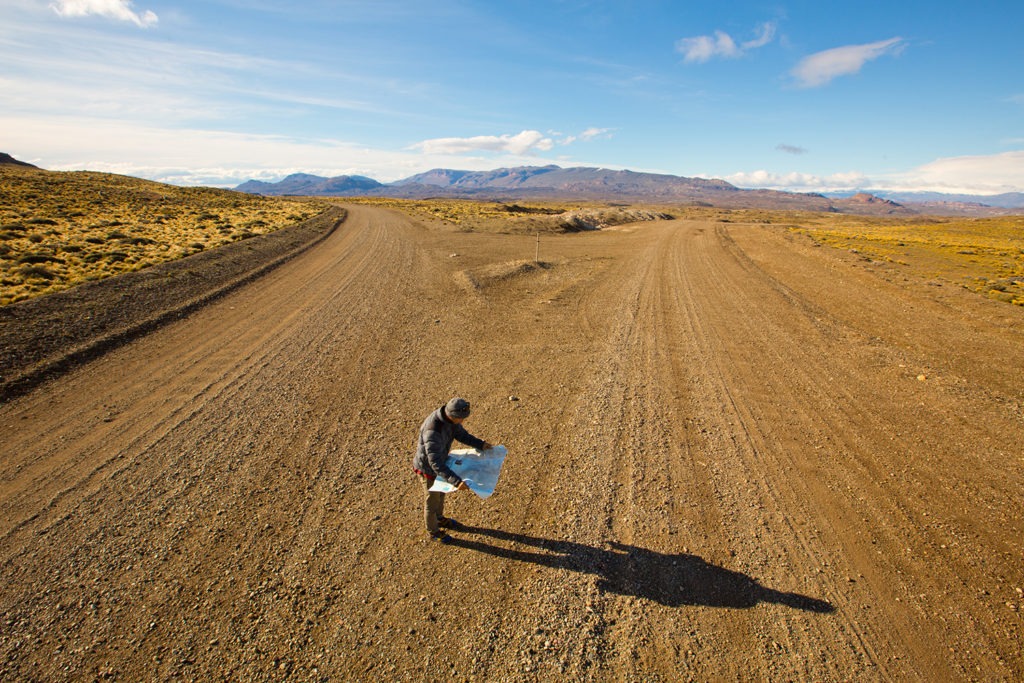
Report Synopsis:
“This special report is the world’s first comprehensive study of how to transition to a net-zero energy system by 2050 while ensuring stable and affordable energy supplies, providing universal energy access, and enabling robust economic growth. It sets out a cost-effective and economically productive pathway, resulting in a clean, dynamic and resilient energy economy dominated by renewables like solar and wind instead of fossil fuels. The report also examines key uncertainties, such as the roles of bioenergy, carbon capture and behavioral changes in reaching net zero.”
Our Takeaway:
The special report by the International Energy Agency (IEA) identifies 400 milestones needed before the world can reach net-zero emissions by 2050, per the goals of the Paris agreement. The IEA road map is a difficult one, there’s no denying that. It states the narrow path to carbon neutrality requires a mammoth deployment of clean energy technologies—renewables, electric vehicles and building retrofits—by 2030. In terms of solar power, it’s the same as installing the largest solar park in the world every single day.
It’s a long and winding road to carbon neutrality, but the milestones along the way can help us keep track of progress and propel us forward to the next one. It’s like following a map on a long wilderness trek. Each landmark you pass brings you one step closer to the peak.
The opportunities atop this particular route are too good to pass up due to difficulty alone. The pivot to a clean energy economy will create millions of new jobs worldwide and modernize energy infrastructure in desperate need of an overhaul. These are all noted in the American Jobs Plan, which underscores the importance of passing legislation that can help kickstart the journey down this narrow pathway to carbon neutrality. The technologies needed to get moving are already available to us and so the time to start our hike up the mountain is now.
The vision outlined in the IEA report is one where by 2050 the global energy sector is powered almost exclusively by renewables, with solar being the biggest contributor. International cooperation is imperative to achieving that vision. The superpowers must work hand-in-hand to develop strategies for global climate action while ensuring that developing countries are equipped with the resources to ensure their own net-zero goals. The next global “safety briefing” on climate occurs in November at the 26th United Nations Climate Change Conference of the Parties (COP26). We’ll be sure to update you with key findings and information as we get closer to November.
Big Oil Is Trying to Make Climate Change Your Problem to Solve. Don’t Let Them
Rolling Stone
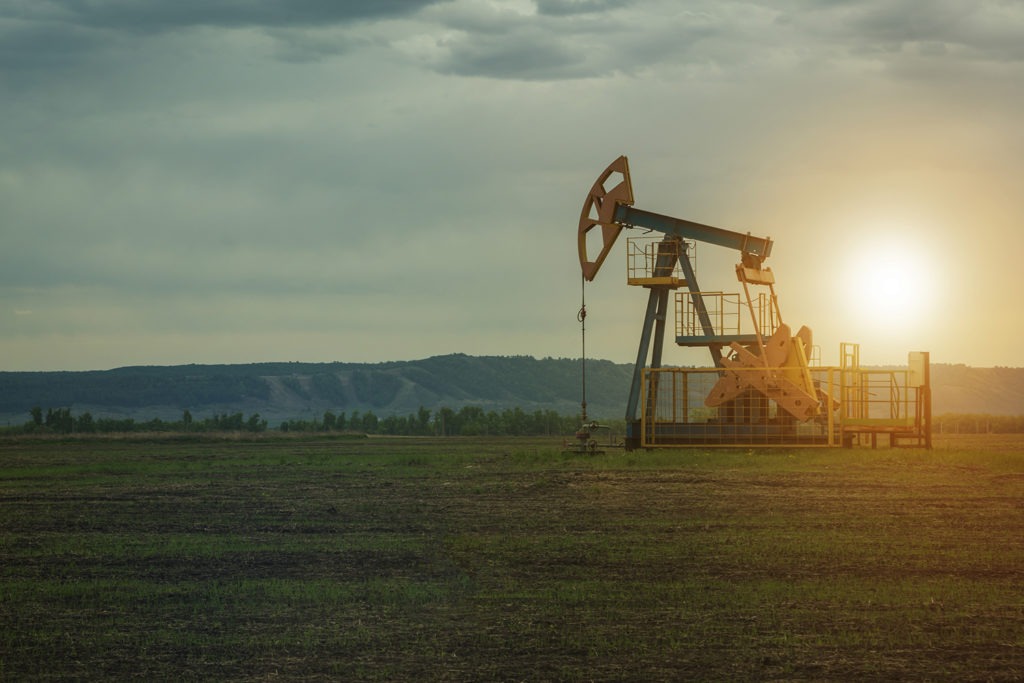
Notable Quote:
“The idea that we’re all responsible for climate change because of our individual decisions is a profoundly unsociological understanding of how behavior is formed through cultural influences, behavioral influences, and economic factors. For example, if you want to ride your bike to work and there are no bike paths and no provisions for you to take your bike on the road, every time you bike to work you take your life in your hands. The idea that we can individually choose to go to a low-carbon transportation system is blaming the victim for the real decisions that are made about how we structure our cities, how we set energy policy, how we set the cost of automobiles. It obscures the power of vested interests to be able to shape our lives.” — Robert Brulle, environmental sociologist and professor of sociology and environmental science at Drexel University
Our Takeaway:
This article highlights a new paper from Harvard science historians Geoffrey Supran and Naomi Oreskes showing that fossil fuel companies have historically laid the blame of fossil fuel demand at the feet of the American consumer. Oreskes is a POW emeritus board member and the co-author of the 2010 book The Merchants of Doubt, which finds the same scientists behind downplaying health risks of tobacco consumption were also largely responsible for climate denial pushes by oil companies. (Check out her book, here.)
Various narratives have been spun by industries looking to put the onus on consumers for the consequences of their purchases. The author notes the tobacco industry’s story that there would be no tobacco companies without tobacco smokers. Or that car crashes happen because humans have a need for speed. Or that litter is caused by people and not unnecessary packaging. That applies to climate change, too; it wouldn’t exist if humans didn’t have an insatiable appetite for fossil fuel energy. That’s nonsense!
To support their claims, Oreskes and Supran studied 212 documents from ExxonMobil, spanning the years 1972 to 2019. They searched for words positioned near mentions of “global warming” or “climate change” and found that “risk” and “demand” showed up most frequently. The word risk was leveraged to infuse doubt into the science of climate change while demand was used to position the oil industry as simply supplying the demand for the product, placing responsibility for climate change on the consumer.
Rather than acknowledging the systems in which humans operate are inherently dependent on fossil fuel consumption and consumers have no other choice but to consume those fossil fuels, oil company rhetoric has flipped blame onto consumers. It creates a belief that the only way someone can credibly speak out on climate is if they go carbon neutral and zero waste in their own lives. It’s a standard no one can live up to, and oil companies have benefited from the fact that no consumer could ever reduce their carbon footprint enough to pass that credibility test.
Supran, the lead author of the paper, hopes the evidence laid out in the report spreads awareness that the responsibility for climate change should be put on the oil industry. This can help alleviate the paralysis people feel when it comes to acting on climate even if their own houses aren’t perfectly in order.
Systemic change is the key solution to climate change. The rhetoric from the oil industry wants consumers to believe that climate change can only be solved by individuals; individuals who happened to be caught in the grips of a system reliant on fossil fuels and thus incapable of solving the problem. In reality, a community effort built upon imperfect advocacy, where the sum of small efforts adds up to impactful change, can deliver climate victories where they’re needed most.
Note: Author Amy Westervelt is behind one of the best climate podcasts out there. Check it out, here.
Biden says Ford’s new electric pickup will help U.S. compete with China, takes one for a test drive
The Washington Post
Notable Quote:
“I think people hear ‘electric vehicle’ and they think Tesla, which is a luxury car or froufrou, and they don’t think about a hard-working vehicle that everyday people drive, and that’s the image we need to change.” — Rep. Debbie Dingell (D-Mich.)
Our takeaway:
Transport is the number one contributor to the United States’ greenhouse gas emissions. Climate change can’t be addressed without addressing the issue of electric vehicles (EVs) on our roads. Luckily, EVs are stepping out into the spotlight. Like when Chloe Kim exploded into the global consciousness when she became the youngest woman ever to win halfpipe gold at the Winter Olympics in 2018.
Ford’s announcement of the electric F-150 Lightning puts EVs center stage. The F-150 is America’s best-selling automobile and the availability of an electric version with a comparable price tag to the internal combustion F-150 will help boost demand for EVs. Lower price tags, increased range, an expanded charging network and performance capabilities equal to internal combustion vehicles, will all shift public perception of the viability of EVs. The F-150 Lightning checks two of those boxes. It also proves that EVs aren’t just luxury vehicles reserved for the elite but rather workhorse rigs at home at the job site or on a rutted out forest road. Check out the “frunk” on the new F-150 Lightning—a 400-liter storage compartment at the front of the truck that’s water-resistant and boasts a drain for cleaning. Now that’s going to come in handy.
Just imagine how rad it’ll be to grab some friends, toss your bikes in the truck bed and rip up to the trails in an electric pickup.
Electric cars ‘will be cheaper to produce than fossil fuel vehicles by 2027’
The Guardian
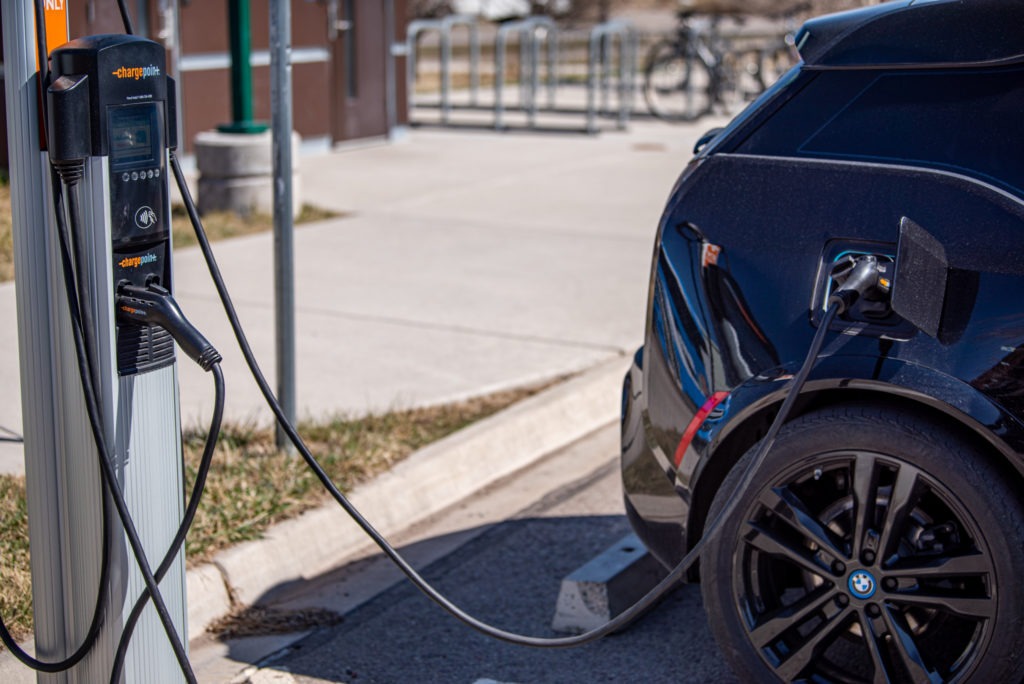
Notable Quote:
“Once you are well over 200 miles per range, and you’ve got a really good charging infrastructure, it becomes a no-brainer. We’ve seen that in Norway.” — David Bailey, a professor of business economics at the University of Birmingham.
Our Takeaway:
The production of EVs is getting cheaper and, according to Bloomberg NEF, it’ll be cheaper than fossil fuel-powered vehicle manufacturing by 2027. The dropping cost of battery production and commitment from auto plants to produce batteries in-house is contributing to the lowering price of EVs. The cost of batteries, generally accounting for between 25 and 40 percent of the price tag of an electric vehicle, has been the traditional deterrent of widespread electric vehicle adoption. Increased affordability, along with a boost in range and improved charging network, is crucial in changing consumers’ minds about electric vehicles.
The adoption of electric vehicles and subsequent improvement to the grid are key goals of the American Jobs Plan. Once the country has modernized the grid and thus strengthened the charging infrastructure, widespread adoption becomes a no-brainer, according to the article. It’s a complete overhaul that’s already occurred in places like Norway, and, along with corresponding policies, the market share for electric cars and vans can reach 100% in Europe by 2035.
Stay tuned as we dive deeper into the topics of the grid and electric vehicles during our American Jobs Plan educational series this spring.
Climate Change Is Making Big Problems Bigger
The New York Times
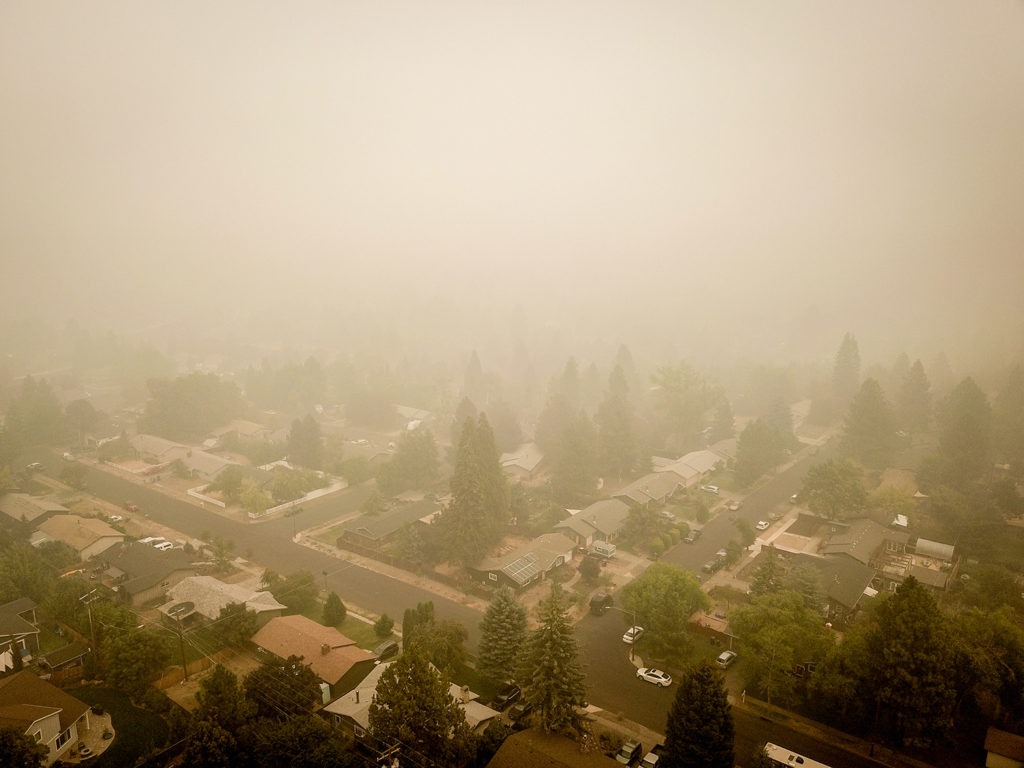
Notable Quote:
“There is no small town, big city or rural community that is unaffected by the climate crisis. Americans are seeing and feeling the impacts up close, with increasing regularity.” —EPA administrator Michael S. Regan
Our takeaway:
I’ve seen it firsthand. On a backpacking trip in August 2020 through Colorado’s Weminuche Wilderness, my two partners and I rose early to catch the sunrise at an alpine lake at 12,600 feet. But the sunrise never really came. The western United States was in the midst of a record-setting wildfire season. Smoke from California and fires on Colorado’s Western Slope had settled on our location. Instead of an alpine sunrise full of pastels and bright light, the sun arrived with a whimper, shrouded behind a smoke-filled haze that infused the scene with a decidedly post-apocalyptic feeling. We made our way up and over mountain passes for the rest of the day, choking on tainted air the whole way and commenting on the surrealness of the scene.
People who spend time in the outdoors are first-hand witnesses to the effects of climate change, from wildfires to water shortages, disease, disrupted ecosystems and more. The findings in this official report from the EPA paint an even sobering picture than what we’ve seen with our own eyes. The EPA’s freshly compiled climate indicators reveal that climate change is a present reality in the United States and negatively affecting the health, safety and communities of its citizens.
While community and legislative actions are necessary to stop the effects outlined in the EPA’s findings, making the data available to the American public is important to understanding the truths of climate change. While the EPA regularly updated these climate indicators until 2016, under President Donald Trump, the data was neglected and not kept current. In January 2021, the climate indicators were revived by the Biden administration with added measures that pulled additional information from government agencies, universities and more.
It’s important to understand the current effects of climate change in order to inspire action to prevent those impacts from becoming permanent. Listening to science can help Americans understand and communicate scientific information and data to their peers, lending substance to the need for quick action to address climate change.
For more on POW’s work with its Science Alliance, click here.
Local Climate News
While national climate topics often dominate the news cycle, there’s still plenty going on surrounding renewables, electrified transit, public lands and more in states and local communities across the nation. Take a look at what’s going on locally via the news blurbs below.
Alaska
The road to U.S. climate goals runs through Alaska
California
California’s volunteer ‘Climate Action Corps’ helps fight climate change
New Jersey
Firefighters battle two wildfires in New Jersey as one leaves 900 acres torched
Washington
Inslee signs climate bills, but vetoes parts that tie them to passage of a transportation package
